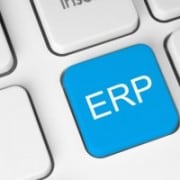Avoiding the seven stages of ERP grief
As complex as enterprise resource planning (ERP) can be, it’s silly not to have to implement an ERP system for your business. There is no one-size-fits-all when it comes to ERP systems because each business is different. To be successful, you must do extensive research to find the ERP that’s right for your budget, your business model, and your team. An article on ITProPortal by Claire Mason explains the many steps of ERP grief when implementing this change into your company. Mason shares how to overcome these setbacks so you can continue to be successful with your implementation.
The seven stages of ERP grief
- Shock – You find out your ERP system isn’t supporting the latest innovative technology. You make think you’re behind, but believe it or not, you’ve got competitors in the same boat. technology is always changing so don’t worry if you haven’t yet caught up. That’s what upgrades are for and your ERP vendors will assist with upgrades.
- Denial – ERP projects are often daunting. You might find that your staff is taking shortcuts, processes are inefficient, inconsistencies creep in and ultimately you lose productivity, and your view of the entire picture. All of this costs money, and if you don’t want to waste any more than you need, address the situations and make some change.
- Desolation – ERP can get very complicated very fast. The best way to solve this is to think deeply about what outcomes you want to see from an ERP system in your organisation.
- Bargaining – Nothing comes cheap, but don’t be deceived by high prices meaning high quality. You need patience and planning for this stage. This is a 10-15 year purchase – it will take time to get the right buy-in.
- Reflection – ERP implementations have a high first-time failure rate. IF you chose wrong, you run the risk of disappointed staff and wasted money. However, if you get it right, you will be behind the best version of your business. You’ll create a flexible, scalable and agile platform, with an efficient and innovative culture.
- Working through – What exactly do you want from your ERP solution? Employees are your biggest source of information – ask them what would make their lives easier and what their issues are. They can tell you what clients’ issues are relating to the how the processes are run in your business.
- Acceptance – You’ve made a match with an ERP provider, now the real work begins. You must now appoint a system administrator, clean your data before migrating to your new system, train your staff. and work on a strategy that will utilize your ERP to it’s maximum potential.
By knowing the stages of “grief” in ERP implementation, you can better prepare your team on how to handle these obstacles so you can experience the return on investment from your ERP solution.



